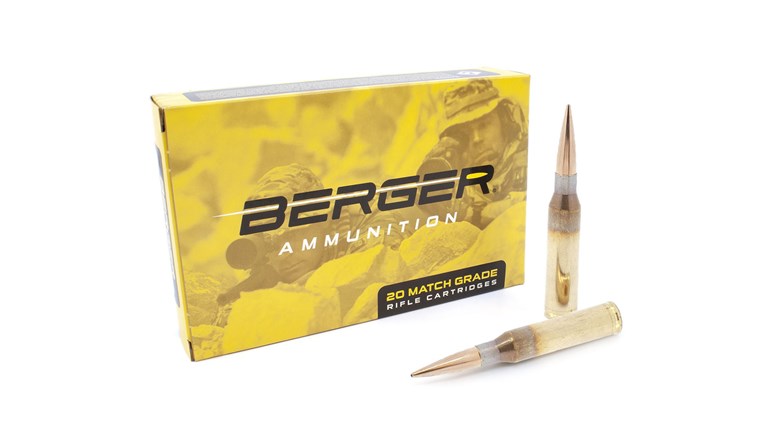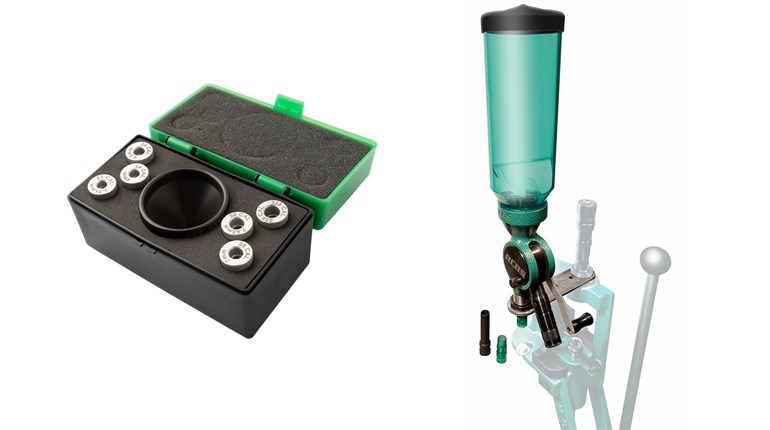
There’s nothing like being able to trot into any old sporting goods or sports department and find the ammunition your firearm loves. Modern firearms are especially tolerant, too, we think: The collective knowledge the industry can rightly boast has made almost everything work better, and work better together.
This goes well beyond merely reliable “bang,” too. We have an ever-increasing number of match-grade performances in multiple pistols and rifles with factory cartridges. In other words, gone and unlamented are the “old days” when you had to buy 10 different varieties of ammunition and hope to find one that gave truly superb performance.As good as factory has become, there are still performance criteria that you can’t easily meet out of a factory box.
So can we have a (dignified) “yippee”?
We grant that there was always a fallback—handloading. As good as factory has become, there are still performance criteria that you can’t easily meet out of a factory box. Ergo, “First Gear” is letting a couple of our favorite “cats” out of their respective bags.
Evolution Gun Works -.001 Sizing Dies
It’s easy to get your loading process quality to about 90 percent (and as old QC hands, we’re pretty sure of our ground here) with stock equipment. Dies and presses are plenty good enough to reach this level as long as you “condition” the inputs: Clean brass helps (mainly because it’s easy to inspect—there’s no actual ballistic requirement to do this), as does some additional inspection. Some people merely sort for mechanical compromises like Berdan priming, others go further by segregating anything with a crimped primer pocket, or even much further—by headstamp.
Such care can get you to 95-percent reliability, but the time penalty is substantive. You’re handling each case at least one extra time, and slowly enough to read that stamp. But if 95 percent sounds like pretty good reliability, think of it this way: The most simplistic analysis still means you’d have five to seven malfunctions in a 130-round USPSA match—more than enough to foul up every stage. A thunk test is about the only way to get beyond this level of quality, but it’s another handling cycle. This is where a technology improvement—as opposed to a process improvement—can pay huge dividends.

When it comes to pistol cartridge reloading, EGW undersized resizing dies are just about our favorite of such up-tech gambits. The short version is simple: These carbide dies—custom made to EGW specs by Lee Precision—take every piece of brass and make it 1/1000th smaller than normal dies can in the first crucial step, as they employ a smaller die mouth radius that sizes further down the case wall and onto the web.
We hope you’ll just take our word for it that the flaws this corrects are myriad, but we know our numbers didn’t lie. We went to 98-percent pass on the thunk test, and kept it even after dumping one pre “sort” for headstamp.
Lee Factory Crimp Die
When we took a mic to our (few) remaining failures, we found seemingly contradictory evidence of why the thunk failures were occurring. They were slightly worse in both marginally under- and over-length cases (no surprise, if you think the geometry through), but even ideal lengths were flunking this crucial test of chambering ability. As we use a separate bullet seating and crimping step, this was a real poser: At one end or the other of the length spectrum, improper crimp closure should disappear.

We messed with this for a solid year without real improvement. More crimp or less, OALs in different ranges would still flunk a chambering test whether we clearly had too much crimp (even to the point where accuracy was reduced by the projectile being undersized by an over-crimp), or where failure to chamber numbers started to fall below our hard-won 98-percent through obvious under-crimp.
Um, ah, damnit?
What we did in the end was an experiment: We bought a Lee Factory crimp die. We’d read varied accounts ranging from heavenly choirs to flung-in-disgust, but were also out of ideas. The seeming magic here is actually a semi-reprise of the EGW undersize die: Post assembly, the Lee dies do what amounts to a full-length resize of the assembled cartridge.Interestingly, it was our remaining manual check that failed, not the dies. We think our normal failure rate is about 1-in-2,500, or about 99.96-percent success.
For us, in other words, it was the heavenly choir. Nearly all our sorts have been abandoned. We slow down the actual loading process a little to look for those “mechanicals” (Berdan, or crimped-in priming), but the combination of these dies has given us back the time of two sorts and of our thunk test. This last we only do for major matches now.
We even ran a fresh set of numbers during a nearby regional Steel Challenge Match in anticipation of bringing this to your attention, and the function rate was 99.88 percent. (Interestingly, it was our remaining manual check that failed, not the dies. We think our normal failure rate is about 1-in-2,500, or about 99.96 percent success.)
A final caution: While the Lee design means you won’t crush a case as a conventional die can, you can over-close the flare. This will have a damaging effect on accuracy, and simply isn’t necessary. Go back to that micrometer and measure. We use the minimum dimension, but no more.
Lube Those Cases—Dillon
Last and not least—you knew there had to be one—we’ve read in die set instructions that carbide makes lube unnecessary for straight wall pistol cases. We emphatically disagree. We lube all our cases, and argue that it’s the “capper,” if you will, for flare closure and the related feed improvements, albeit in an unanticipated way. Mainly, this applies to progressive presses.

Lubing cases reduces overall friction in the press system, and this in turn reduces the amount of force that is needed, particularly at the end of the stroke. By reducing this force, the shell plate is less inclined to wobble a couple of thousandths (or more, as time and wear take their toll) of an inch, and can have the same effect as an over- or under-length case, reducing the average completeness of flare closure.
We know reloaders who object to the residue that case lubing leaves behind. We’ve never traced this to any problems in a firearm or the resulting ammunition, however. It’s true that a grounded round is more inclined to pick up a little schmutz this way, but such a cartridge should receive a thorough circumferential wipe and inspection under these circumstances and irrespective of lube state. Whether factory or hand-built, such a round deserves a careful look before being chambered.… while the Lee design means you won’t crush a case as a conventional die can, you can over-close the flare.
We’ve used all the lubes—we think—but like Dillon’s slightly better because application is soooooo controllable with the pump sprayer. We get almost zero overspray, and a single bottle goes a long way—easily 10,000 rounds. Just remember to give it a sound shake prior to each use.
The overspray control we get with a carefully stolen ultra-high-tech cookie sheet. We think Mrs. Guns-n-Gear still thinks our daughter swiped it for college.


































